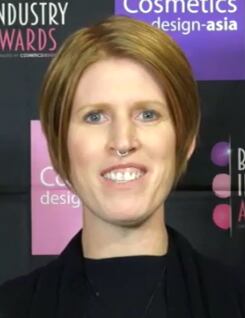Beauty as an industry, much like the women and men who love it, are making progress every day. And that progress takes place in consumers’ homes, at beauty counters, and in laboratories around the globe. But what does it all amount to?
Materials and methods
Magnetic lash extensions are a great example of simple, smart technology put to good use in beauty. But there’s a whole lot more innovation that is updating and advancing consumer expectations for tech in color.
Fiber lash formulas in mascara (while they have been around for a little while) have paved the way for products from Dior Show, Makeup Forever, Smashbox Full Exposure—the list goes on—and they have shown beauty lovers what innovation in tech and color looks like in real life.
Now, plenty of beauty lovers in big cities and chic downtowns around the country are going all in for microblading, the tattoo / permanent makeup option for stylish brows.
And microblading is the sort of cosmetics option that is not only lifting consumer expectations around color products, but is also changing the way beauty lovers think about skin care. Anything long-lasting, whether it’s semi-permanent makeup or an all-day lip stain, changes the way consumers experience color products. This is just as true for lip color as it is for eye makeup and complexion products; consumer expectations of what a product can feel like on the skin and how it can last in real-life situations is evolving and formulators simply must keep up.
Color and sparkle
When influencers and beauty lovers discuss color, the word ‘pigmented’ is all over the place. Popular eyeshadows are “richly pigmented,” “highly pigmented,” “most pigmented.” You’ll hear about “high pigment” lip glosses; while others boast a “powerful punch of pigment,” et cetera, et cetera.
Consumers love rich, deep, distinctive color for eyes, lips, nails—for all things color. And pigment companies like Sun Chemical strive to stay on and ahead of consumer preferences and trends when it comes to color and sparkle.
In an interview with Cosmetics Design just weeks ago, Kelly Dobos, cosmetics technical manager for the Americas region at Sun Chemical, explained how not only color is adapting to current market demands but so is glitter. In fact, plastic glitter is on track to be the industry’s next microbead—the next environmental aggressor that the beauty world can so its part to alleviate.
Dobos explains here why that’s true: “Plastic glitters are made by coating very thin sheets of polymers like polyethylene terephathalate and polymethyl methacrylate layered with aluminum and absorption pigments….These are the same type of polymers that [were] used in the production of microbeads,” say Dobos.
Her company is—not surprisingly—ready to help beauty makers not only meet consumer demand for on-trend pigments but also for alternative sparkle. As Dobos told Cosmetics Design in February, “synthetic mica [like Sun Chmical makes] is purer than the natural mica with regards to heavy metals with greater transparency and luster allowing for greater sparkle and color consistency in color.”
Science and tech
No matter how simple or complex a color cosmetics product formulation is, each is made possible by science. And in much the same way that beauty is driven by the new and the next, so too is science always advancing and benefiting from the persistent search for what else is possible.
In fact, it was just about one year ago when The Esteé Lauder Companies presented a slew of new scientific data on skin and pollen, on photo-aging, on infrared radiation, and more at the annual meeting of the Society for Investigative Dermatology.
The companies’ SVP of basic science research and advanced technologies explained Estée Lauder’s presence at the event this way: “As leaders in the cosmetic industry with a long-standing scientific heritage, we have been at the forefront of many areas of research including skin and hair structure and architecture, repair and protection, inflammation and reactivity, as well as circadian and other control mechanisms.” Which is all to say that novel scientific findings often result in new beauty products.
In September, a team of researchers led by Ming Xiao of The University of Akron identified a structural color solution that they believe has the potential to be commercially scalable for cosmetics manufacturing.
Another recent finding suggests that DNA crystal films could be the next generation of sun care (which is now a very common benefit of color / complexion products).
Last summer, European researchers created a particle emulsifier for both oil-in-water formulations and water-in-oil formulations.
And these are just a few of the latest advances in science that will influence coming iterations of color.
---

Deanna Utroske, CosmeticsDesign.com Editor, covers beauty business news in the Americas region and publishes the weekly Indie Beauty Profile column, showcasing the inspiring work of entrepreneurs and innovative brands.
